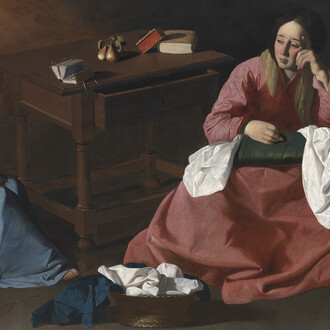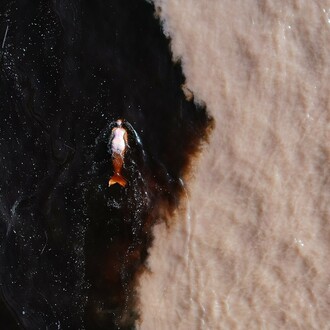Charlie Smith London is delighted to present Barry Thompson’s first solo exhibition at the gallery. Thompson, a graduate of the Royal College of Art in 2005, is recognised for his impeccable miniature landscape paintings and figurative drawings.
Having grown up in Essex, Thompson consistently references the sites and experiences of his childhood and adolescent years. We might consider his landscapes as a setting of the scene where activities and rites of passages would occur: a place of escape in an apparently rural area which was in reality the urban wrapped wastelands of Dagenham and nearby. Fittingly, the paintings are titled after songs that Thompson would have been listening to at the time, alluding to the soundtrack of formative years; obsessions of youth; and performance. Indeed, Thompson went on to play in a band and considers the activities of his youth and the act of making work to be performative.
Within this locale, Thompson sublimated aggression by playing war games; or sexual urges by reading illicit magazines; or more innocently developed a keen interest in ornithology. He would, as so many others have done, act out fantasies during the phase orientated period of adolescence, and it is these experiences that inform his drawings, leading to series depicting soldiers, birds, rock stars and pornographic motifs.
In this exhibition Thompson continues to combine source material that signifies an ongoing exploration of the historical and the autobiographical, blurring the boundaries between fiction and reality; self and other; past and present. He has progressed from depicting First World War soldiers from the Artists Rifles regiment, who were based in his home town of Romford, to a combination of those with shell shock and characters from Stanley Kubrick’s ‘Full Metal Jacket’, which explored the psychological pressures undergone during military training.
In his erotic drawings, Thompson depicts Mary Millington (often in absence), a 1970’s model and actress of whom Thompson was familiar. Millington suffered from depression and eventually committed suicide with a cocktail of vodka and medication that Thompson himself takes. In combination with twilight landscapes that suggest the hallucinatory or transcendental, and studies of graffiti strewn trees, Thompson presents us with a body of work that interrogates psychological disturbance; the metaphysical; performance; nostalgia; creativity; and ultimately the self.
















